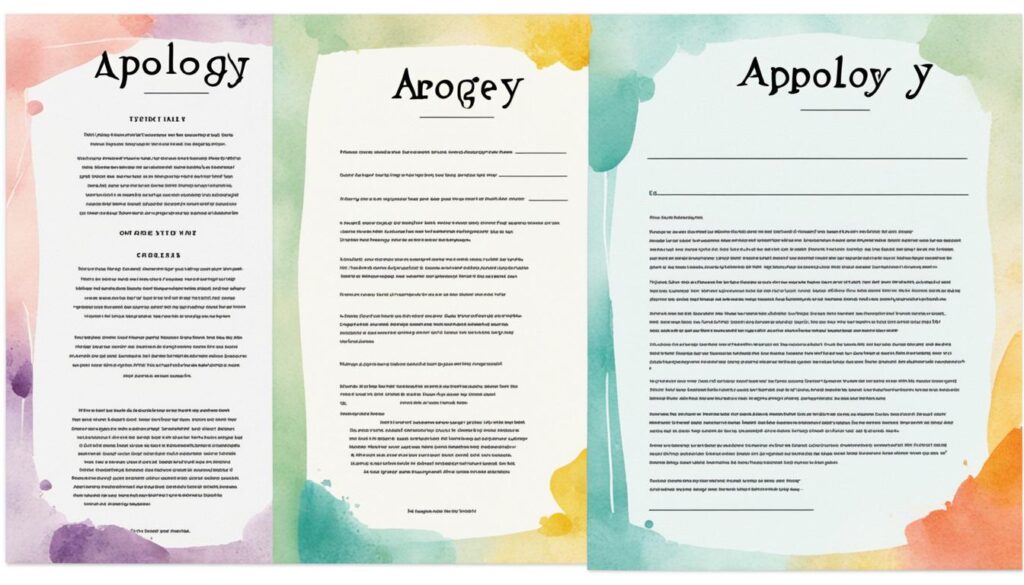Apologizing to a customer for bad service is an essential part of maintaining customer satisfaction and loyalty. When businesses fail to meet customer service goals, it can lead to negative experiences and customer churn. To stand out from competitors and reduce churn, businesses must learn how to apologize effectively and show genuine care for their customers.
Avoiding common mistakes such as downplaying the customer’s feelings, failing to admit mistakes, making empty promises, and offering insincere apologies is crucial. Research shows that a sincere and heartfelt apology not only reduces churn but also increases customer satisfaction. In fact, 73% of customers say they will abandon a brand after experiencing three negative incidents.
By following apology best practices, businesses can turn negative experiences into positive outcomes and demonstrate their commitment to customer satisfaction. This includes offering a sincere apology, taking ownership of mistakes, explaining what happened, outlining the solution, and following up with the customer.
Key Takeaways:
- Apologizing effectively is crucial for maintaining customer satisfaction and loyalty.
- Avoid common mistakes such as downplaying the customer’s feelings and offering insincere apologies.
- Offer a sincere apology, take ownership of mistakes, explain what happened, outline the solution, and follow up with the customer.
- Research shows that a sincere apology not only reduces churn but also increases customer satisfaction.
- By following best practices, businesses can turn negative experiences into positive outcomes and demonstrate their commitment to customer satisfaction.
Common Mistakes Businesses Make when Apologizing
When businesses apologize to customers, they must be careful to avoid common mistakes that can make the apology insincere or ineffective. Some of the common mistakes include:
- Downplaying the customer’s feelings: It’s important to acknowledge the impact of the situation on the customer and show genuine empathy.
- Not admitting mistakes: Taking ownership of mistakes is crucial in building trust with customers.
- Making false promises: Customers appreciate honesty, so it’s important to avoid making promises that cannot be kept.
- Keeping the apology vague: Providing specific details about the issue and the steps being taken to resolve it shows accountability and transparency.
- Apologizing excessively: While apologizing is necessary, excessive apologies can come across as insincere.
- Offering a begrudging apology: A genuine and heartfelt apology is essential. Any hint of insincerity can further damage the customer relationship.
These mistakes can leave a sour taste in the customer’s mouth and may even drive them away. In fact, research shows that customers are more satisfied when they receive both compensation and an apology. Therefore, businesses should strive to avoid these mistakes and instead focus on offering a sincere and genuine apology that addresses the customer’s concerns and demonstrates a commitment to improving their experience.

Why avoiding these mistakes is important
Insincere apologies can damage the relationship between a business and its customers. When customers feel that their concerns are not being taken seriously or that the apology is disingenuous, they are more likely to take their business elsewhere. On the other hand, a sincere and genuine apology can help rebuild trust, improve customer satisfaction, and enhance brand loyalty.
5 Apology Best Practices
To ensure that your apology is effective and meaningful, it is important to follow best practices that prioritize sincerity, accountability, communication, and problem resolution. These practices will help you improve customer satisfaction and maintain a positive relationship with your customers.
- Offer a sincere apology: Express genuine empathy and concern for the customer’s experience. Use words that convey a heartfelt apology and acknowledge the impact your actions or mistakes have had on the customer.
- Take ownership of mistakes: Admit your errors without making excuses or shifting blame. Accept responsibility for the negative experience and show that you understand the customer’s frustration.
- Explain what happened: Provide a clear and concise explanation of the situation. Help the customer understand the cause of the problem or mistake, demonstrating transparency and honesty.
- Outline the solution: Offer a concrete plan to address the issue and resolve the customer’s concerns. Provide details and timeframes for implementing the solution and preventing similar problems in the future.
- Follow up with the customer: After the apology and resolution, don’t let the conversation end. Reach out to the customer to ensure their satisfaction and ask for feedback on how you can further improve their experience.
By implementing these best practices, you can show your customers that you value their satisfaction and are committed to providing excellent service. Apologizing effectively can turn negative experiences into opportunities for growth, enhancing your brand reputation and customer loyalty.
Remember, an effective apology is just the first step. It is important to back it up with actions that demonstrate your commitment to improvement and customer satisfaction. By doing so, you can strengthen the trust and relationship with your customers.

| Apology Best Practices | Benefits |
|---|---|
| Offer a sincere apology | Show empathy and care for the customer, building trust and understanding. |
| Take ownership of mistakes | Admitting mistakes fosters accountability and helps rebuild the customer’s confidence. |
| Explain what happened | Transparency helps the customer comprehend the situation and instills confidence in your business. |
| Outline the solution | Clearly presenting a plan of action demonstrates your commitment to resolving the issue and preventing its recurrence. |
| Follow up with the customer | Continued communication shows that you value the customer’s feedback and satisfaction, fostering a strong relationship. |
5 Templates You Can Use When You Need to Make an Apology
Businesses often find it beneficial to use apology letter templates to save time and ensure consistency in their apologies. However, it’s crucial to personalize these templates to suit the specific situation and customer. When a customer complains, it’s essential to address their concerns promptly and professionally.
Here are five common scenarios that may require an apology letter:
- A negative customer service experience
- A website or system outage
- A late or lost shipment
- A billing error
- A product issue
When using an apology letter template, make sure to include:
- A sincere apology,
- An explanation of what went wrong,
- An acknowledgment of the customer’s concerns and goals,
- An outline of the proposed solution,
- A request for forgiveness.
Personalizing the templates with specific details, such as the customer’s name and relevant order or incident numbers, makes the apology feel more genuine and impactful. By using these templates, businesses can effectively address customer complaints, show empathy, and restore trust.

Remember, an apology letter is an opportunity to turn a negative customer experience into a positive one. Use these templates as a starting point, but always tailor them to fit the unique circumstances and personalize them for each customer. By expressing genuine remorse and providing a clear path to resolution, businesses can salvage customer relationships and foster long-term loyalty.
How to Write a Good Apology Letter to a Customer
When it comes to apologizing to a customer, writing an effective apology letter is key to resolving their concerns and maintaining customer satisfaction. Follow these guidelines to ensure your apology letter is meaningful and impactful:
- Say sorry: Start your letter by acknowledging the mistake and expressing genuine remorse.
- Admit mistakes: Take ownership of the errors made and avoid making excuses.
- Offer an explanation: Provide a brief and clear explanation of what happened, without shifting blame.
- Acknowledge customer’s goals: Show empathy by recognizing the impact the mistake may have had on the customer’s goals or experience.
- Provide clear next steps: Outline the actions you will take to address the issue and prevent future occurrences.
- Ask for forgiveness: Humbly request the customer’s forgiveness, demonstrating your commitment to making amends.
- Remind yourself it’s not personal: Keep in mind that the complaint is about the situation, not a personal attack.
- Offer feedback options: Provide channels for the customer to share additional feedback, ensuring their voice is heard.
A good apology letter should be personalized, empathetic, and focused on resolving the customer’s concerns. Remember to follow up with the customer after sending the letter to address any remaining issues and ensure their continued satisfaction and loyalty.

| Common mistakes | How to write a good apology letter |
|---|---|
| Downplaying the customer’s feelings | Say sorry and acknowledge their emotions |
| Not admitting mistakes | Take ownership and admit the errors made |
| Making false promises | Be honest and avoid making unrealistic commitments |
| Keeping the apology vague | Provide a clear and concise explanation of what happened |
| Apologizing excessively | Acknowledge the mistake without excessive repetition |
| Offering a begrudging apology | Apologize sincerely and genuinely |
Customer Apology Letter Examples and Templates
Crafting an effective and meaningful apology letter can be a challenging task for businesses. However, there are various examples and templates available to assist you in this process. These resources can serve as a starting point and be customized to fit the specific situation and customer you are addressing.
Some common types of apology letters include personal apology letters, mass apology letters for widespread issues or outages, managerial apology letters for employee mistakes, apology letters for inconvenience, apology letters to unsatisfied customers, and apology letters for product issues. Each of these letters should follow the guidelines of saying sorry, admitting mistakes, explaining what happened, acknowledging the customer’s goals, offering a solution, asking for forgiveness, and providing options for customer feedback.
By utilizing these apology letter examples and templates, businesses can effectively address customer concerns and resolve issues, leading to improved customer satisfaction and loyalty. Remember, a sincere and well-crafted apology can go a long way in rebuilding trust and maintaining positive relationships with your valued customers.
FAQ
Why is it important for businesses to apologize to customers for bad service?
Apologizing to customers for bad service is crucial for businesses to maintain customer satisfaction and loyalty. Failing to meet customer service goals can result in customer churn and negative experiences. By offering a sincere and heartfelt apology, businesses can turn negative experiences into positive outcomes and demonstrate their commitment to customer satisfaction.
What are some common mistakes businesses make when apologizing to customers?
Some common mistakes businesses make when apologizing to customers include downplaying the customer’s feelings, not admitting mistakes, making false promises, keeping the apology vague, apologizing excessively, and offering a begrudging apology. These mistakes can leave a sour taste in the customer’s mouth and may even drive them away.
What are some best practices for offering an effective apology?
To offer an effective apology, businesses should follow best practices such as offering a sincere apology, taking ownership of mistakes, explaining what happened, outlining the solution, and following up with the customer. This shows empathy, accountability, and a commitment to addressing the customer’s concerns.
Are there any apology letter templates businesses can use?
Yes, businesses can use apology letter templates to save time and ensure consistency. However, it’s important to personalize these templates to suit the specific situation and customer. Personalizing the templates with specific details and addressing the customer by name helps to make the apology more genuine and impactful.
How should businesses write a good apology letter to a customer?
When writing an apology letter to a customer, businesses should follow certain guidelines such as saying sorry, admitting mistakes, offering an explanation of what happened, acknowledging the customer’s goals, providing clear next steps, asking for forgiveness, reminding yourself that it’s not personal, and offering customer feedback options. This helps to make the apology meaningful and effective.
Can businesses find apology letter examples and templates?
Yes, there are various examples and templates available for businesses to craft effective and meaningful apology letters. These examples and templates can be used as a starting point and customized to fit the specific situation and customer. By using these resources, businesses can effectively apologize to customers and resolve their issues.
